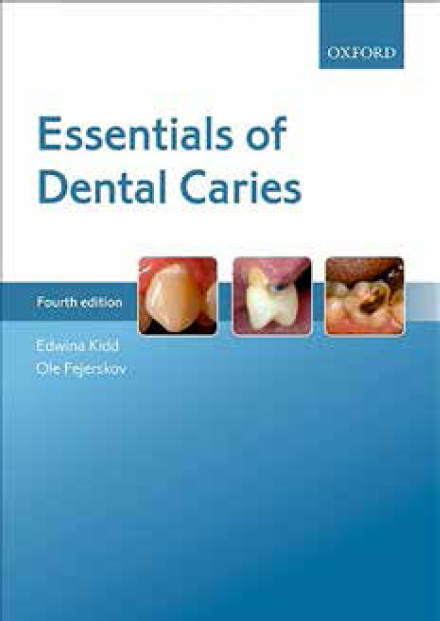Article

It is now nearly 30 years since the first edition of this text book was published by one of the current authors, Edwina Kidd, accompanied at that time (1987) by Sally Joyston Bechal. For this fourth edition she is accompanied by Ole Fejerkov, both undoubted leading academics in the field of Cariology. The original textbook set out to do what it says on the tin, provide the undergraduate dental student with the ‘Essentials of Dental Caries’ to enable them to bring ‘basic theoretical concepts to the chairside’ to enable the understanding and ‘rationale behind clinical techniques’ and caries management. It sounds a bit like the term we have come to know, ‘Translational Research’ which the Medical Research Council describes as turning fundamental discoveries into improvements in human health and economic benefit and did not really appear in the Medical Literature until the early 1990s, some time after the first edition of this book was published!
Much has changed over the last three decades, both from the knowledge gained through research and clinical practice, together with the recognition and expansion of the oral healthcare team. The fourth edition does remain true to form and is the perfect cariology starting block for ‘junior students, dental nurses, oral health educators, hygienists and therapists’ and all others involved in oral healthcare. The book consists of eight chapters and is both easy to read and thought provoking. Chapter one, the ‘Introduction’, like all good books sets the scene and defines what Dental Caries is and describes various flavours of the disease. Chapter two expands on this and describes how carious lesions develop from the initial biofilm formation to frank cavitation; it emphasizes the dynamic nature of the disease and the role that bacteria, saliva and diet play. A chapter on caries detection and diagnosis follows focusing on the clinical visual examination and the use of classification systems that assess activity and lesion severity. This chapter also looks at useful and realistic aids to caries detection and diagnosis that can be used to inform the clinician still further. There are three chapters on caries control, the latter word preferred by the authors over prevention, the reasoning being apparent in the text; one for all patients, one for patients with active disease – where the gas has to be turned up – and one for the population. The third edition of this textbook finished with a chapter on ‘The operative management of caries’, and in this new fourth edition it has changed to ‘When should a dentist restore a cavity?’ This chapter questions the once aggressive, early and rather extensive restoration of teeth to a philosophy of truly controlling the disease through less invasive biological means. What use is all of this information if it cannot be relayed to the patient in a meaningful way in order to bring about change? The answer would perhaps be none, so there is therefore a chapter on communication, motivation and behaviour change.
The Epilogue to the book is thought provoking and challenges how oral healthcare is provided, by whom and for whom in a cost-effective way. Essentials of Dental Caries is a must for all students involved in the delivery of oral healthcare. Not only is it essential reading for those starting off on their career, but it is also a welcome refresher for those that have been at it for some time!
